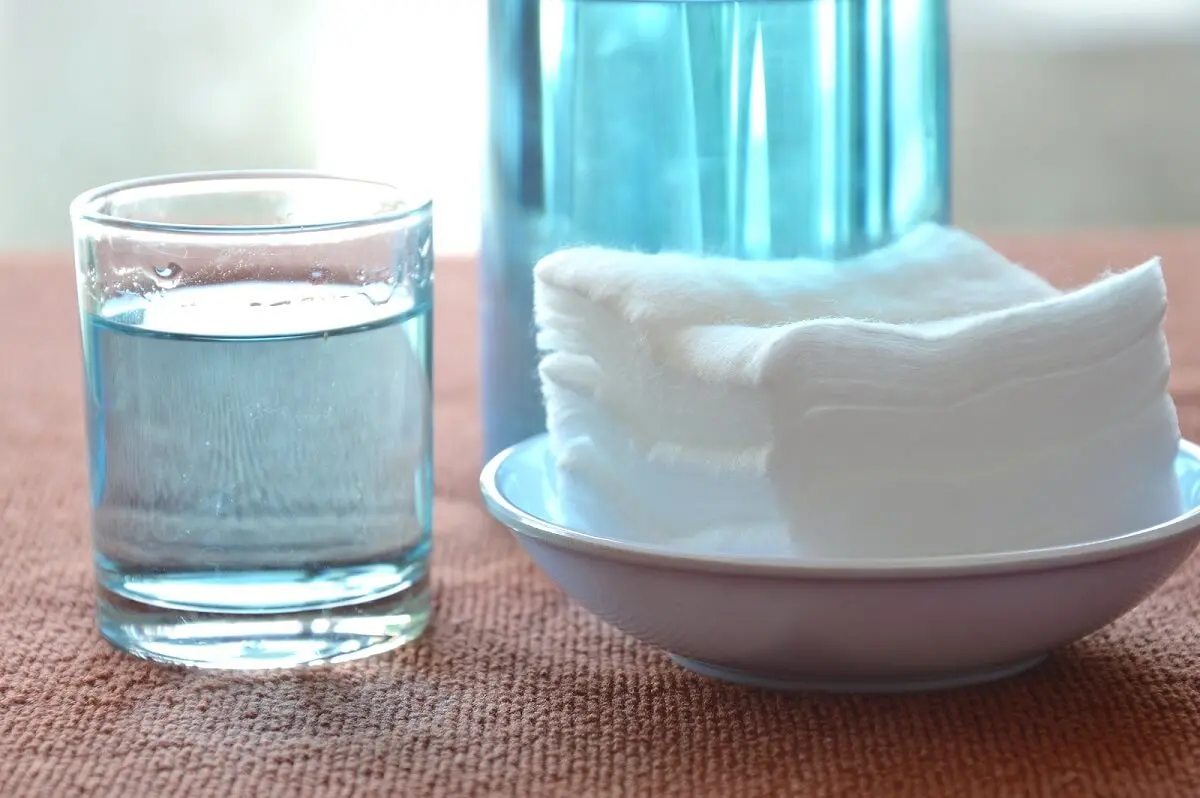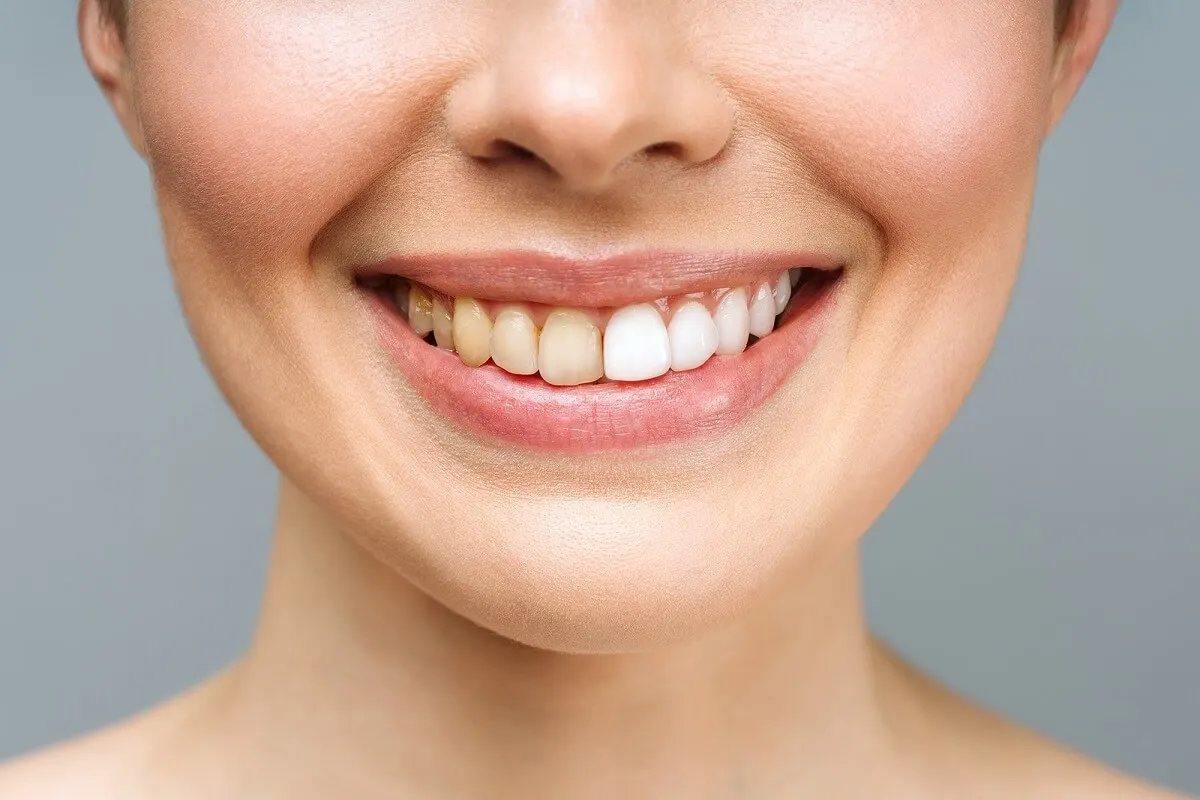Is It Safe to Clean Your Mouth or Toothbrush With Hydrogen Peroxide?


Written and verified by the dentist Vanesa Evangelina Buffa
It’s common to hear advice or find homemade recipes on the Internet that promote the use of hydrogen peroxide in the mouth or as a method to clean the toothbrush. The rationale is that this substance has disinfectant, antiseptic and whitening properties that can be used in the oral cavity.
But not all the benefits of this liquid are beneficial in the mouth. Even its use at home may involve some risks. In this article, we’ll clarify what hydrogen peroxide is used for and if using it is safe for your health. Read more to learn all about it.
What is hydrogen peroxide?
Hydrogen peroxide is popularly known as “hydrogen peroxide”. It’s a chemical compound with disinfectant, antibacterial and antiviral properties. It’s commonly found in home medicine cabinets, as it’s used to clean skin wounds.
It’s available in different concentrations. However, the one usually marketed in pharmacies is 3%. When used as directed by a professional, it’s generally safe.
In terms of oral health, its antiseptic action is beneficial only in specific cases. For example, it can complement the treatment of periodontitis or some endodontic procedures. In other cases, it can cause unwanted damage.
It’s also an active ingredient in many products used for teeth whitening treatments. Therefore, some people believe that it’s possible to use it in the mouth to improve its appearance. However, as we will tell you later, this is quite risky and the results may not be as expected.
It’s common to find recommendations on the use of hydrogen peroxide for the mouth and to clean the toothbrush. This practice became more popular at the time of the coronavirus pandemic, in order to reduce the germs in the bristles of the hygiene element.
Now that we know what hydrogen peroxide is, we tell you about its possible uses in the mouth and toothbrush, and how safe they are.

We think you may also enjoy reading this article: LED Teeth Whitening: Advantages, Disadvantages, and Care
Cleaning your toothbrush with hydrogen peroxide
Cleaning your toothbrush is a topic of concern for many people. Using this contaminated instrument in the oral cavity implies the possibility of carrying debris and germs that could make us sick.
The daily exposure of its bristles to food debris and bacteria present in the mouth makes proper hygiene important. In addition, the toothbrush can become contaminated with particles from the environment, bathroom germs, or germs that develop from moisture on the bristles.
But according to the American Dental Association (ADA), to clean it properly, simply rinse it with a stream of clean water and then allow it to air dry in an upright position. No other antiseptic or antibacterial products are necessary.
What is important is to replace the toothbrush every 3 or 4 months, or sooner if there is evidence of deterioration. It’s also recommended to discard it after having suffered an infectious disease.
Despite this, some people prefer to perform a more extreme cleaning and make sure their toothbrush is impeccable. For this, they resort to antiseptics such as chlorhexidine, denture cleansing tablets, or boiling water. Among these options, hydrogen peroxide appears.
This is a cheap and effective option when it comes to disinfecting and keeping the toothbrush clean. It consists of submerging the brush head in a glass with 3% hydrogen peroxide and letting it stand for a few minutes. Then, it should be rinsed and left to dry.
As we have already said, this type of cleaning is not necessary. But if you choose to do it anyway, it’s suggested to do it once a week or less frequently. When in doubt about the condition and cleanliness of the toothbrush, the best option is always to replace it with a new one.
Uses of hydrogen peroxide in the mouth
Apart from cleaning your toothbrush, hydrogen peroxide is sometimes used inside the mouth. In some specific cases, this liquid is used by the dentist for specific therapeutic purposes.
But when used in a domestic way, without indication and supervision of the dentist, there may be negative health effects. Inflammation of the mucous membranes and damage to tooth enamel, fillings, and crowns are some examples.
Here are the ways people use hydrogen peroxide in the mouth and what you should know about it.
Hydrogen peroxide to rinse the mouth
Hydrogen peroxide, being a liquid, can be used to rinse the mouth. But by no means should it be used just because you can buy it in the pharmacy. Its action could irritate and cause burns to the oral mucosa or erode the tooth surfaces.
The dentist may suggest the use of this product combined with other ingredients to make mouthwashes, which help to reduce gum inflammation in cases of gingivitis and periodontitis. The professional will indicate to the patient the appropriate concentration and quantity to avoid adverse effects.
In general, the concentration should not exceed 3%. Therefore, it’s necessary to dilute it in water. In addition, it should remain in the mouth for short periods of time.
Hydrogen peroxide helps to fight gingivitis by releasing oxygen, which prevents the development of anaerobic bacteria that cause the disease. It also makes it possible to reach hard-to-reach areas and break down bacterial plaque films, even inside periodontal pockets.
Dental mouthwashes containing hydrogen peroxide as one of their components can also be found on the market. In this case, you would not be using pure hydrogen peroxide, but combined with other ingredients.
These rinses are usually indicated to maintain and prolong the effects of teeth whitening treatments. For safety reasons, it’s important to choose products with the Food and Drug Administration (FDA) seal of approval.
In recent times, hydrogen peroxide mouthwashes have taken on a new utility. At the time of the coronavirus pandemic, some dentists suggested that patients rinse their mouths with an antiseptic before going to the dentist’s office.
This was to reduce the viral load in the mouth and reduce the risk of infection. After all, hydrogen peroxide is an accessible and inexpensive preventive option.
Homemade toothpaste
The interest in natural remedies and cosmetics has been increasing in recent times. Among the homemade recipes for making toothpaste, it’s often suggested to combine hydrogen peroxide with baking soda until the desired consistency is achieved.
You should know that this is one of the most dangerous ways to use hydrogen peroxide in the mouth. This mixture wears away the dental enamel and causes irreversible abrasion, since the eliminated dental tissue doesn’t recover. In addition, it irritates the gums.
Hydrogen peroxide to whiten the teeth
Achieving a white and radiant smile is the desire of many people who are interested in the aesthetics of their mouth. That is why teeth whitening treatments are one of the most popular dental procedures today.
When teeth look yellow and stained, it’s crucial to seek professional help to have the procedure performed by a dentist. In-office whitening will achieve noticeable results and decrease the risk of unwanted effects.
Products used by dentists to whiten teeth may contain hydrogen peroxide. However, this does not mean that they use hydrogen peroxide bought in pharmacies.
Depending on the clinical case, the dentist will choose the most appropriate concentration for the patient and also the treatment modality. Sometimes, the product is placed in the office or the patient does it at home, according to the professional’s instructions. Both forms can even be combined.
Now, there are many at-home whitening options available on the market. Many contain hydrogen peroxide in different concentrations. The problem is that their results are usually not very obvious or long-lasting. In fact, their unsupervised use carries several risks.
The same is true of the homemade recipes that abound on the Internet. Their combination of acidic and abrasive substances – including hydrogen peroxide – tends to wear down tooth enamel. Thus, instead of brightening teeth, it actually damages them. In addition, if they come into contact with the gums, they can irritate them.
The risks of using hydrogen peroxide on the toothbrush or in the mouth
We’ve already told you about the possible uses of hydrogen peroxide in the mouth and to clean the toothbrush. We’ve also clarified that the most advisable thing is not to use this product unless your dentist indicates otherwise.
Although it has properties that can be used for health, it should be used with knowledge and precision. Otherwise, it can cause unwanted and risky health effects. Below, we’ll tell you about some of them:
- It irritates the gums and mucous membranes of the mouth: the skin of the mouth is very sensitive. Frequent or prolonged exposure to high concentrations of this product can cause wounds or irritation.
- It damages tooth enamel: exposing the tooth surface to high concentrations of hydrogen peroxide, and using the product regularly or for a long time wears away the enamel. When this protective layer is removed, people experience sensitivity and pain. In addition, they are more at risk of future caries.
- It can stain teeth: Contrary to what is expected, the abrasive effect of hydrogen peroxide on teeth wears away the surface enamel. As a result, the innermost layers of the tooth become evident and have a yellowish color.
- Ingesting hydrogen peroxide can be dangerous: swallowing a little hydrogen peroxide accidentally may be okay. But ingesting small doses on a regular basis can damage the mucous membranes of the digestive tract, leading to ulcers or changes in the intestinal flora.
- It damages crowns, fillings, and dental implants: in the same way that hydrogen peroxide wears down teeth, it can damage the materials of fillings or prostheses.

Like this article? You may also like to read: White Spots on the Teeth: Why Do They Appear?
Using hydrogen peroxide to clean the mouth and toothbrush
Hydrogen peroxide has health benefits, including oral health, as long as it’s used responsibly and only when necessary. As we told you, it helps treat periodontitis and is a key ingredient for whitening teeth. But its easy accessibility can lead to inappropriate use.
When it comes to improving the health and appearance of your mouth, the best option is always to seek advice from your trusted dentist. The professional’s advice will help you choose the products that best suit your needs and use them safely.
All cited sources were thoroughly reviewed by our team to ensure their quality, reliability, currency, and validity. The bibliography of this article was considered reliable and of academic or scientific accuracy.
- Konidala, U., Nuvvula, S., Mohapatra, A., & Nirmala, S. V. S. G. (2011). Efficacy of various disinfectants on microbially contaminated toothbrushes due to brushing. Contemporary clinical dentistry, 2(4), 302.
- Méndez, J., & Villasanti, U. (2020). Uso de peróxido de hidrógeno como enjuague bucal previo a la consulta dental para disminuir la carga viral de Covid-19. Revisión de la Literatura. International journal of odontostomatology, 14(4), 544-547.
- Loaiza Aguilar, J. G. (2021). Eficacia de enjuagues bucales de libre venta con peróxido de hidrógeno para el aclaramiento dental.
- EL HOG, S. E. N., DROG, S., & DE AB, S. 22. INTOXICACIÓN POR SUSTANCIAS DEL HOGAR. PROTOCOLOS DE MANEJO DEL PACIENTE INTOXICADO, 185.
- Marcos Di Pascua, D. A. Gingivitis ulceronecrotizante aguda.
- Ruiz, A. B., Rodríguez, S. A. G., Carvajal, M. D. L. Á. A., de Oca, M., Rivas, D. E. G., & Pulido, J. I. R. Peróxido de hidrógeno como coadyuvante en la terapia periodontal.
- Baltazar Ruiz, A. (2021). Actividad antimicrobiana in vitro de un gel a base de peróxido de hidrógeno contra Aggregatibacter actinomycetemcomitans (Doctoral dissertation, Universidad Autónoma de Nuevo León).
- Charcopa Bone, K. E. (2011). Irrigación en endodoncia (Bachelor’s thesis, Universidad de Guayaquil. Facultad Piloto de Odontología).
- Frías Mena, S. G. (2016). Efecto del blanqueamiento dental en la rugosidad del esmalte: análisis comparativo in vitro entre peróxido de hidrógeno y peróxido de carbamida (Bachelor’s thesis, Quito: UCE).
- Begazo Gavilan, B. F. (2020). Blanqueamiento dental a base de peróxido de hidrógeno al 35%.
This text is provided for informational purposes only and does not replace consultation with a professional. If in doubt, consult your specialist.








